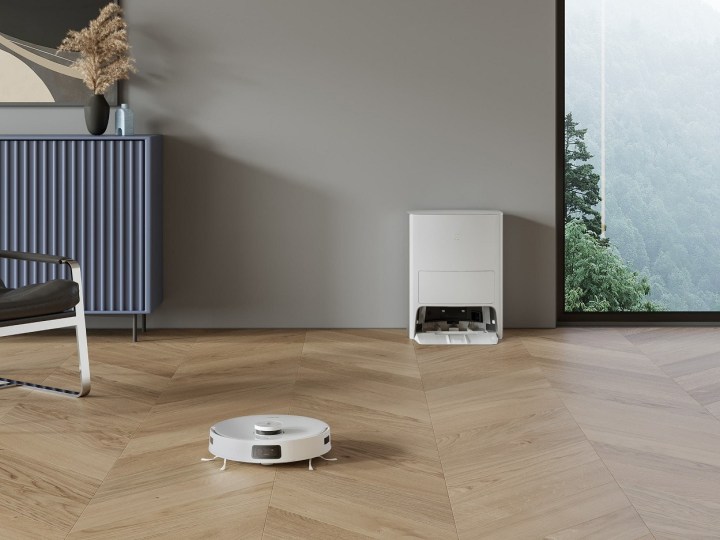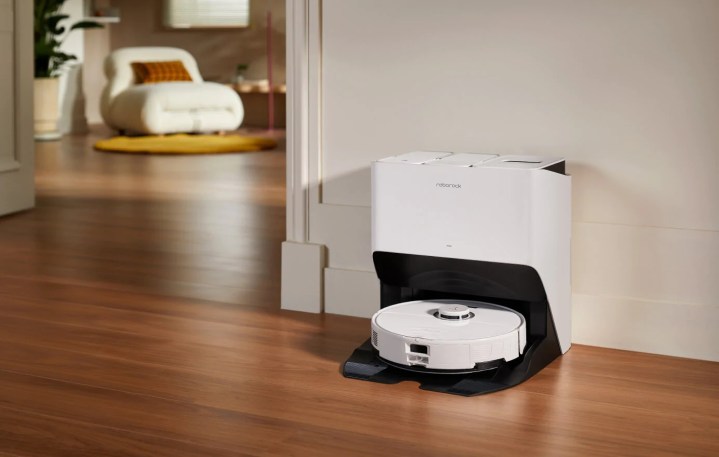Robot vacuums have come a long way over the past few years. What started out as a niche device prone to falling down the stairs or getting tangled in pet toys is now able to keep your floors clean for weeks on end without any manual input. They come in all shapes, sizes, and budgets — but if you’re looking to get the most for your money, you need to spring for a premium model that knows how to automatically empty its dustbin.
Some robot vacuums are more headache than helper

The appeal of robot vacuums is simple. Instead of having to vacuum your home every few days, these circular little monsters can suck up debris, pet fur, dirt, and everything else lurking in your carpets without the need to dirty your hands.
Unfortunately, that’s not the reality for the vast majority of robot vacuums available today. If you opt for an entry-level (or even mid-range) robot vacuum, you’ll have to deal with much more maintenance than you’d expect. From detangling its brush to putting up with lackluster cleaning, you might spend more time babysitting your robot vacuum than you would if you picked up a traditional vacuum.
Worse yet, you’ll be left emptying its tiny dustbin after each cleaning — and since its dustbin is much smaller than a traditional vacuum, it can often become remarkably dirty if you’re not keeping up.
Entry-level robots are also built with entry-level components, so don’t be surprised if you notice squeaky wheels, brushes that are constantly getting stuck on long fibers, or dustbin filters that are easily clogged.
It’s all about the docking station

If you’re looking to truly automate your vacuuming needs, then you’re almost required to spring for a model that can empty its own dustbin. These robot vacuums don’t come cheap (most hover around $1,000), but they allow you to go weeks (sometimes months) without any manual intervention.
After each cleaning, all robot vacuum returns to their docking station. And if you picked up a lower-priced model, that’s where the automation ends and your manual efforts are once again required.
But if you picked up a higher-priced model, the action is just getting started. Not only will the docking station charge your vacuum, but it’ll automatically empty its dustbin into a larger reservoir that can go weeks before filling up. And if your vacuum doubles as a mop, the docking station might also serve to clean and dry the mopheads using attached water reservoirs.
In other words, robot vacuums with advanced docking stations and the ability to empty themselves are finally making the dream of an automated clean come true.
Only elite robot vacuums are living up to the hype

While it can be enticing to spend $500 and pick up a basic robot vacuum, you’d be better off saving your money, increasing your budget, and waiting a bit longer to pick up a premium $1000 model. After all, robot vacuums are meant to save you time — but if you’re constantly dealing with the need to empty dustbins, that defeats the purpose of a robot.
Expensive models also typically offer better cleaning skills, with something like the luxurious Roborock S8 Pro Ultra offering nearly three times the suction of lower-priced devices. They also feature more robust mapping and navigation software, allowing them to deftly avoid anything left on the floor while still tackling every possible inch of your home. That means you’ll never be tempted to break out a traditional vacuum and perform a spot-cleaning, something that you might find yourself doing frequently with a lesser model.
Of course, even these high-end robots still need regular maintenance. Every so often you’ll need to clean out their filters or replace a part that’s starting to get worn down. But once you’ve used a robot vacuum that knows how to empty itself and is fully automated, it’s hard to go back to anything else.
Editors’ Recommendations
Services Marketplace – Listings, Bookings & Reviews